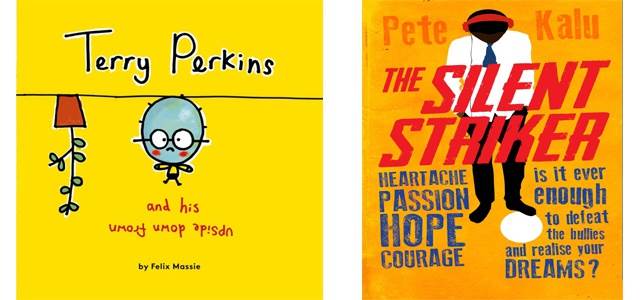How to make the ideal inclusive library
Published on: 06 February 2016 Author: Alex Strick
On National Libraries Day, Alex Strick imagines her perfect inclusive library - and suggests some practical measures to help every library be as accessible as possible.

Different formats
When I picture my dream library, it is (unsurprisingly) enviably well-resourced and positively heaving with inclusive activity.
Being a dream library, money is no object. So a vast range of books have been bought in an equally vast range of different formats - because in my world, every book would be published in multiple formats, like audio, large format, dyslexia-friendly and braille.
Inclusive approaches
Back in the real world, just having a positive stance on inclusion is a good start. And not just a line on a website.
'Being genuinely inclusive is about much more than just having a disability statement. It's about having a practical, effective and constantly evolving strategy.'
A whole-team approach ensures everyone strives for true equality and fosters positive attitudes towards disability.
Real accessibility
When we think 'access', we automatically think ramps, hearing loops, lifts and wheelchair-accessible toilets. However, a library also needs to consider issues such as shelf height and the physical space needed to move around different displays.
Plus, accessibility is of course about more than just physical access. Inclusive library services need to be accessible to children and adults with all kinds of different needs, not all of which are physical and not all of which (by any means) can be seen.
My perfectly inclusive library would support all customers equally - those who have profound and multiple learning difficulties, those on the many different parts of the autistic spectrum, those who are blind, those who are non-verbal... Everyone.
Finding the books
All library users need to be able to find the books they want. This is stating the obvious - but it's not always as easy as it should be!

Pictorial room plans, visual schedules and the use of signs, symbols and braille can all help some visitors negotiate their way around a library, take part in activities and find the books they want.
Thinking about how books are displayed is also important. Allowing visitors to see as many front covers or books (as opposed to just spines) can really help people see what is on offer.
Inclusive activities
'Special' events (for 'special' audiences) are thankfully becoming less common, as we all recognise the need to make core activities as inclusive as possible.
Ideally, many of a library's regular events will include BSL and makaton. The perfect inclusive programme should also include activities of different lengths, sizes and approaches, such as relaxed story times and small-group sessions.
And in my 'money-no-object' library, I'd of course bring in sensory story experts. I'd give staff regular training in multisensory book sharing from people like Bag Books.
Then there would also be plenty of time after sessions for families to browse and socialise. The programme on offer would also naturally include a diverse range of disabled speakers, authors and illustrators.
Promoting the services
Perhaps as important as making services accessible is making sure everybody knows about them and understands what is on offer.
Also vital is the attitude of staff - all library staff need to feel confident about welcoming people with a wealth of different needs and signposting them to the most relevant services - but without pigeon-holing or making assumptions.
Inclusive book stock
'My perfect library shelves are rich with popular, successful mainstream books. These contain disabled characters naturally and casually, alongside books 'about' disability and books with disabled protagonists.'
The books also feature numerous different forms of disability, not just the most 'obvious' (disability does not just equal wheelchairs).
In terms of finding all these inclusive gems, Letterbox Library is an unbeatable source of inclusive and diverse books, also offering tailored book packs for schools, early years settings and libraries. Also look out for our Bookmark book of the month.
Variety and authenticity
The perfect inclusive book collection aims to include a number of different experiences of any particular form of disability (be it autism, visual impairment or deafness) - so that young readers are exposed to more than just a single picture of that disability.
Ideally, I also try to find out whether a book has been based on genuine research or perhaps even direct experience of disability.
Small steps
'If we are to stand the chance of achieving real equality (whether in libraries, the children's book world, or indeed the wider social context), small steps are surely the answer.'
The key is to keep moving forwards, constantly reviewing progress and avoiding complacency.
Topics: Bookmark, Librarian, Disability, Inclusive, Features, Teacher tips





